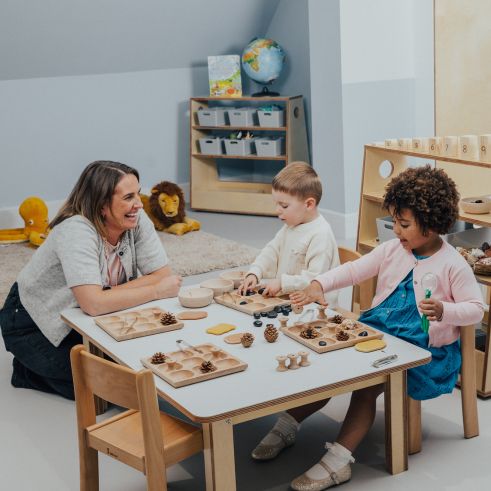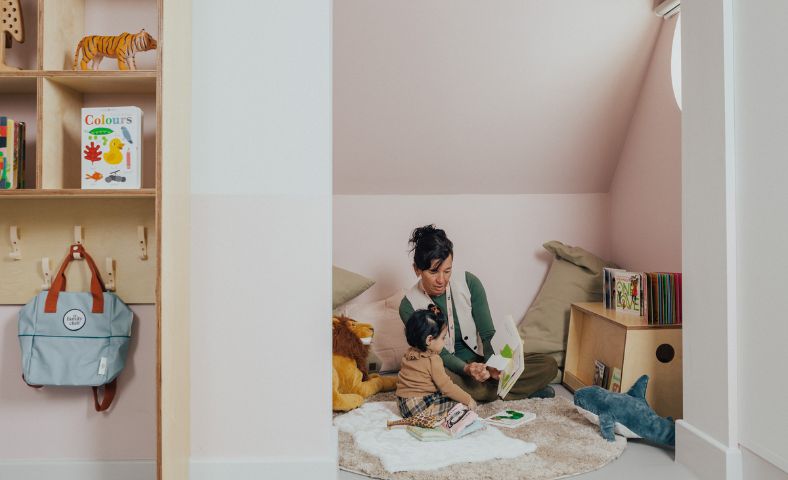
Supporting children with SEND: Practical tips for early years
The foundation for a child’s confidence, education, and general wellbeing is laid during their formative years. All children benefit from this, but those with special educational needs or disabilities (SEND) need even more support in these early years.
Supporting children with SEND should be a priority and at N, we are committed to creating an inclusive environment where every child is valued and understood.
This article will explain what SEND is and what families and professionals can do to help guarantee that children with SEND get the support they need to thrive.
Understanding SEND: Definition and scope
If you are familiar with the term SEN, SEND stands for Special Educational Needs and Disabilities, covering a wider range of needs.
Common examples include:
- Milestone developmental delays
- Speech and language difficulties
- Autism spectrum conditions
- Hearing or visual impairments
- Physical disabilities or medical conditions
Why recognition matters
Children with SEND should receive the right support as soon as possible. This is why early intervention is beneficial, as early measures lead to better chances of improving learning, wellbeing, and long-term outcomes.
SEND Code of Practice
In the UK, the SEND Code of Practice sets out a statutory framework for schools, nurseries, and local authorities. It guides practitioners to provide not just children but also young people with SEND with the proper educational support and equal access to opportunities.
The nursery experience
An inclusive early years setting is best suited for children with special education needs and disabilities under the age of five. Finding a UK nursery with a SEND-driven approach is essential. Many modern nurseries design their spaces thoughtfully, so that every child feels comfortable and supported. It’s not just the approach that matters, but having multiple sensory-friendly spaces or curated quiet nooks where children can retreat to and manage their emotions.

Learning through play is another crucial instrument. For children with SEND, play offers more than simply enjoyment; it provides them with the opportunity to develop their motor skills, social skills, and communication engagingly and naturally.
It goes without saying that in addition to an inclusive environment, you also need skilled specialists who can adapt their approaches to suit different demands. Continuous SEND support training improves a team’s ability to identify issues early and implement solutions.
As important is collaborating with families and establishing strong partnerships. Nobody is often more familiar with a child’s particular triggers, abilities, and learning preferences than their family and/or caregiver. Better outcomes come from their cooperation and open listening.
Key steps to supporting children with SEND
Support plans tailored for individual needs
The secret to successfully overcoming any learning obstacles a child may be facing is choosing a strategy that works for them. The appropriate approach will enable them to meet their developmental objectives more rapidly, regardless of whether it involves communication, sensory processing, or learning speed.
The four stages of SEN support
- Assess: Understand the child’s needs through observation and assessment.
- Plan: Develop strategies that fit the child’s learning style.
- Do: Put support into action, whether through play-based interventions or adapted routines.
- Review: Reflect on progress with families and adjust as needed.
Working with specialists
Educational psychologists, occupational therapists, and speech therapists can all provide support. Working together ensures that a child’s needs are met on all levels.
Multi-agency collaboration
SEND services often include social care, health, and education. The combined efforts of educators and experts in different fields really do make a difference for families and children.
Early intervention
Emerging needs are frequently identified first by nurseries. Early pattern recognition is made possible by practitioners’ observation of children’s play and daily routines.
Experts can provide significant support once they have identified learning and developmental challenges through focused activities. For example, speech and language games help improve communication, while fine motor tasks such as threading beads or using playdough strengthen physical skills. Additionally, sensory play can teach children how to interact with their environment and control their emotions.
Helping children develop independence is another priority. Practising skills like dressing, washing hands, or tidying toys can be built into daily routines. These small steps foster confidence while keeping expectations realistic. This becomes especially important when getting ready for school, where independence and confidence help ease the transition.
Supporting well-being alongside learning
Supporting children with SEND includes helping them with their emotional wellbeing. Practical resources that reduce ambiguity, such as emotion cards, mood meters, designated peaceful areas, or visual timetables, can help individuals identify and manage their emotions.
Children with SEND deserve to feel part of their community. A thorough support plan includes fostering friendships and peer play.
Mental health and resilience develop best in nurturing, playful environments. Families can create playful spaces for mental wellbeing at home, while nurseries can ensure children feel safe, valued, and supported in their everyday learning.
Working with families
Families are central to SEND support. The partnership between carers and family members is the key to achieving consistency between home and nursery. When everyone participates in co-creating a support plan for a child with special educational needs, it becomes easier to achieve shared goals.
Clear, open communication is key. Regular updates and feedback meetings reassure families that their child’s needs are being understood and supported.
It’s also important to empower families by pointing them towards the services available through their local authority and wider support networks. This helps families feel equipped and informed. Nurseries should also be transparent about their own policies. At N, for example, we make essential safety information readily available so families can feel reassured and confident about their child’s care.
Challenges and opportunities in SEND support
Even while inclusive education has a clear vision, there are always obstacles to overcome. Resources are scarce, funding is often limited, and different communities and settings may have varying levels of understanding regarding SEND needs. These challenges may impede development and prevent all children from receiving regular support.
However, when inclusion is prioritised, the benefits are felt widely. Children with SEND thrive, peers learn empathy and understanding, and families feel supported; society as a whole benefits from more inclusive and compassionate communities.
Examples of good practice can be seen in nurseries that incorporate sensory-friendly spaces, collaborate closely with external specialists, and develop child-centred support plans that are regularly reviewed and refined.
Frequently asked questions
How do you support children with SEND?
By creating inclusive environments, developing personalised plans, working with professionals, and ensuring consistent family involvement.
What are examples of SEN support?
Examples include small group teaching, adapted resources (like visual aids), or access to specialist therapists.
Why is SEND support important?
SEND support is vital for children to reach their potential and improve well-being; it lays the foundation for future education and opportunities.
Early support for kids with SEND fosters self-assurance, independence, and a passion for learning. Children with SEND can thrive with inclusive practices, effective family-practice collaboration, and appropriate multi-agency support.
At N, we’re committed to ensuring every child feels seen, valued, and supported, and we’re here to help families along the journey.

